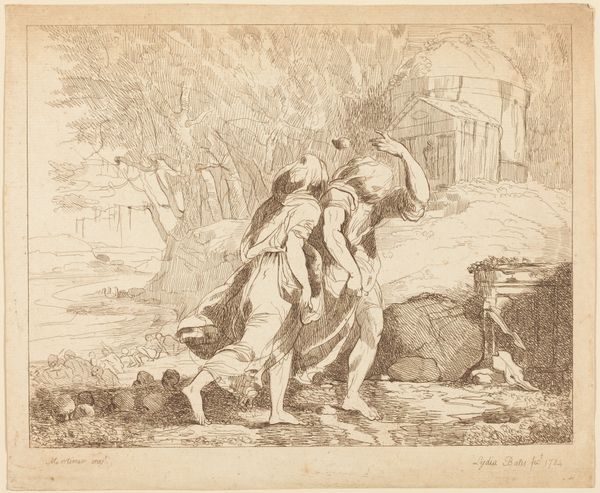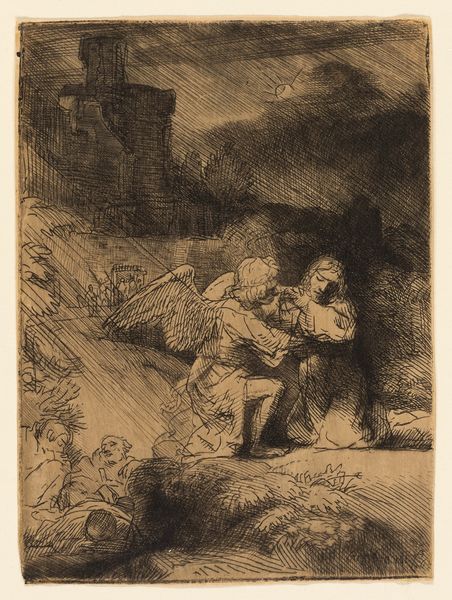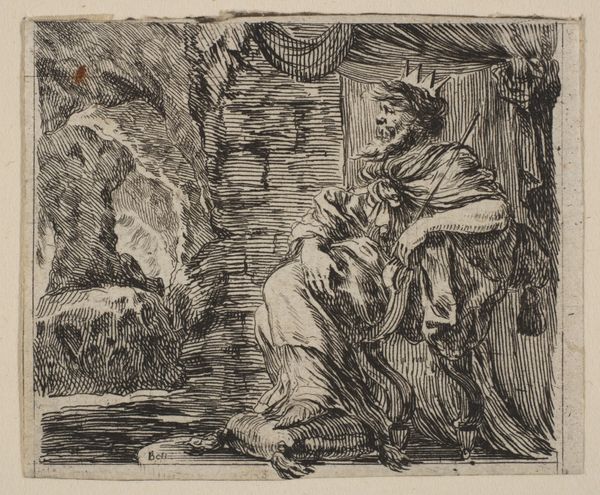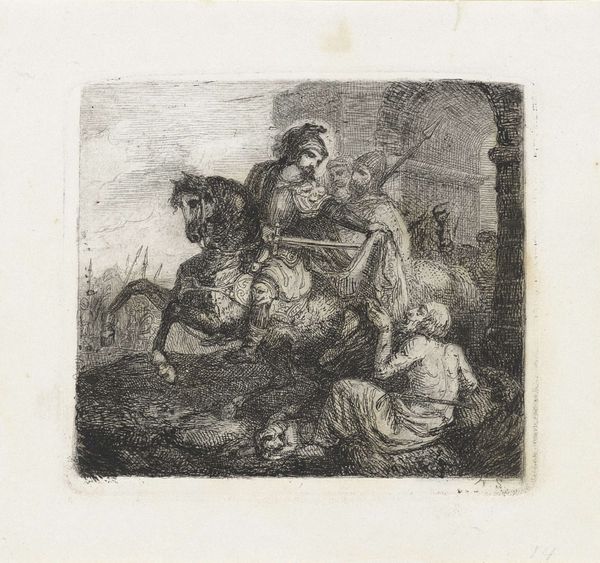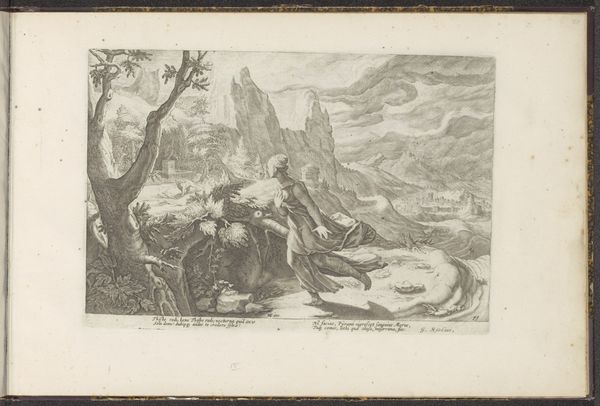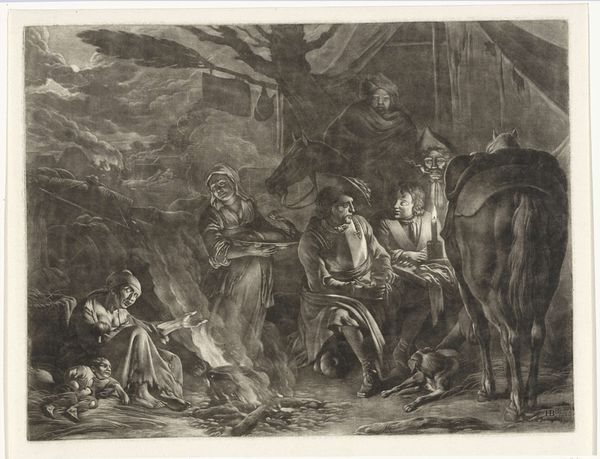
drawing, paper, charcoal
#
drawing
#
landscape
#
charcoal drawing
#
figuration
#
paper
#
social-realism
#
pencil drawing
#
genre-painting
#
charcoal
#
realism
Dimensions: overall (approximate): 29.5 x 45 cm (11 5/8 x 17 11/16 in.)
Copyright: National Gallery of Art: CC0 1.0
Curator: John Costigan's charcoal drawing, "Workers of the Soil," created around 1932, depicts a rural family against a stark landscape. It’s social realism, and its emotional weight is undeniable. Editor: Heavy, isn't it? Like the sky’s about to fall. The texture in the clouds, the rough, scratchy marks creating form... it all points to a world bearing down on these figures. Makes me think about burden and resilience. Curator: Costigan’s work frequently explored themes of rural life and the dignity of labor. What I find interesting here is how the figures blend into the environment. Editor: Blending but also resisting, I think. Their clothes suggest poverty, hard labor. The mother holds a child close, a fragile symbol of hope against the looming dark skies. We have to understand this within the larger context of economic exploitation and disenfranchisement. Curator: There’s a universality, too, though. I see echoes of Millet in the subject matter and, in the dramatic use of light and shadow, perhaps a nod to the Old Masters. But there’s a stark rawness that is very Costigan. The lone, leafless tree only seems to amplify this atmosphere. Editor: Absolutely. Costigan is pulling from established visual rhetoric to build something explicitly about class and the land. It's a subtle yet insistent commentary. Look how the mother in the left foreground becomes a central anchor—the compositional linchpin. What does her positionality as a woman signify within this framework? Is this gendered labor? How does that shape how we perceive this scene? Curator: I am so drawn to the hands in this piece, those rugged hands speak to an honest depiction of life. He somehow captures that reality without sentimentality. Editor: I’d agree. This piece transcends time, speaking to persistent questions about social inequalities and environmental pressures, issues that demand ongoing activist engagement. I leave this artwork pondering these themes, how it still informs struggles around race, class, and access today. Curator: It reminds me how our ancestors before us have persevered and triumphed—an inspirational message to all.
Comments
No comments
Be the first to comment and join the conversation on the ultimate creative platform.



